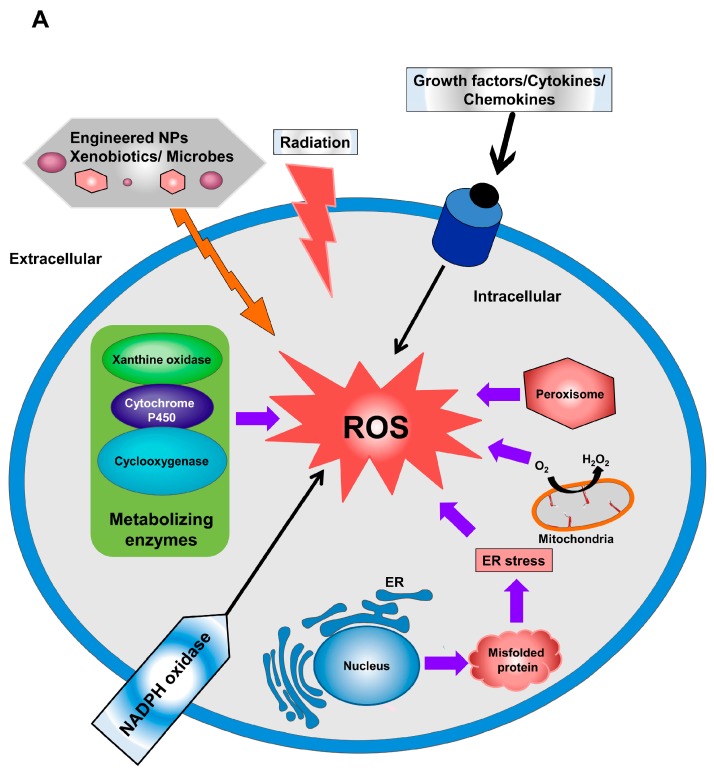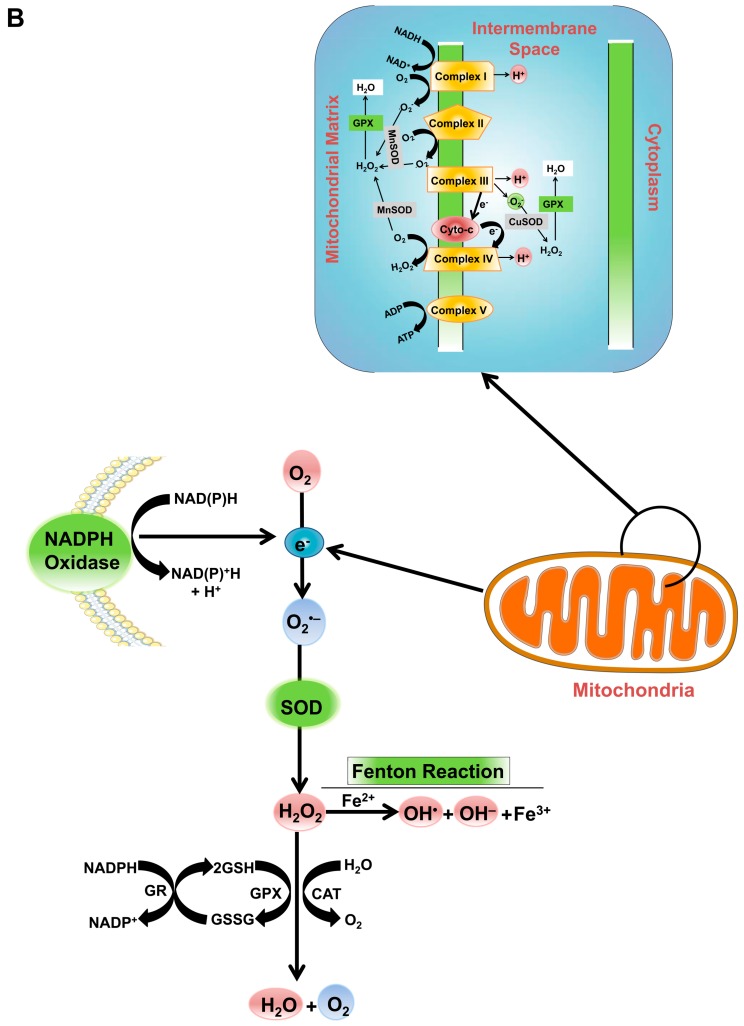Figure 1.
Sources of Reactive oxygen species (ROS) generation. (A) Descriptive diagram outlining the extracellular and intracellular sources of ROS generation. The extracellular sources of ROS are represented by environmental pollutants, radiation exposure, microbial infection, and exposure to engineered Nanoparticles (NPs). Intracellular ROS can be generated from the mitochodria, endoplasmic reticulum (ER) stress, cellular-metabolizing enzymes, and the NOX family; and (B) a schematic diagram summarizing the formation of ROS from nicotinamide adenine dinucleotide phosphate (NADPH) oxidase and mitochodria and the mechanisms involved in ROS scavenging of ROS. NOX: NADPH oxidase; SOD: superoxide dismutase; CAT: catalase; GPX: glutathione peroxidase; e−: electron; GR: glutathione reductase; Cyto-c: cytochrome c; and GSSG: Glutathione disulfide.


